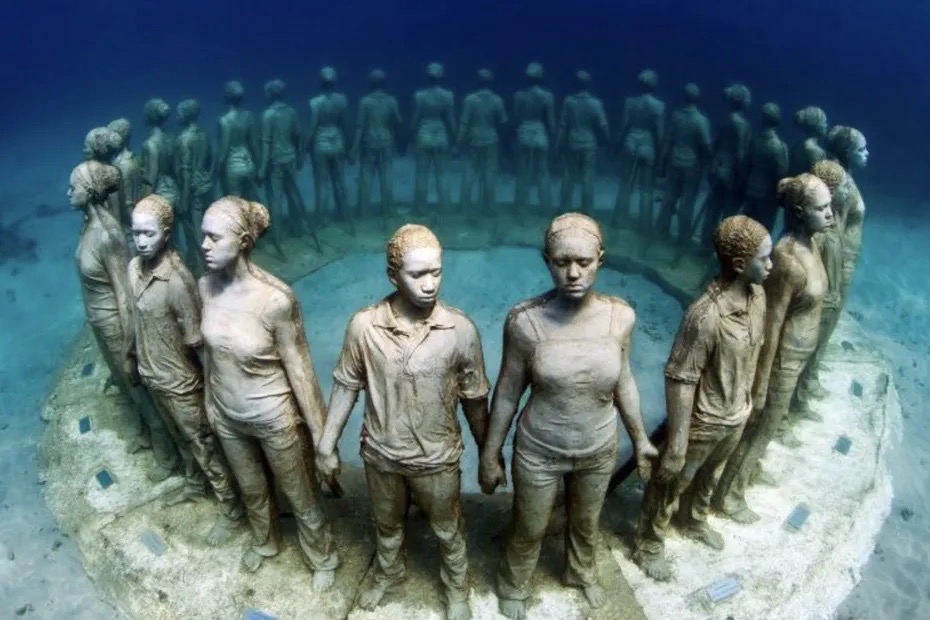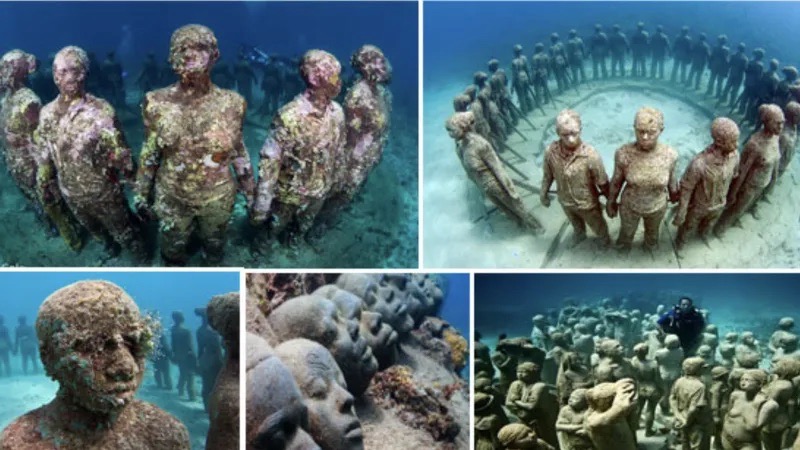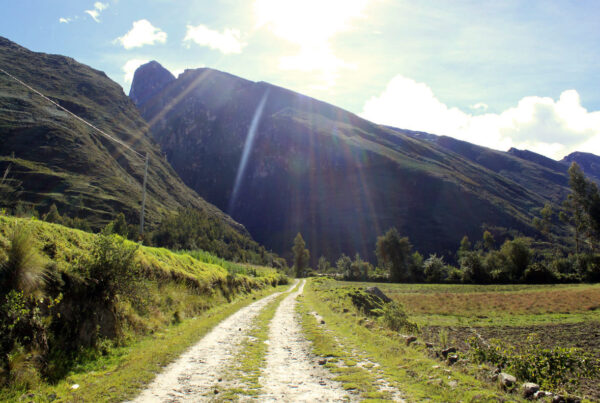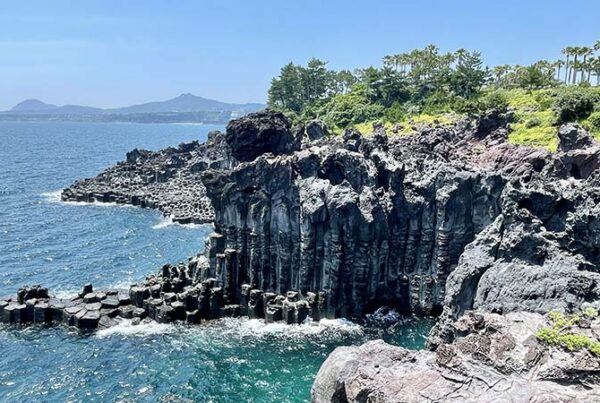
The sun rises slowly over the turquoise waters of Grenada. From the dinghy of my parents’ catamaran, we head towards Molinere Bay. This morning, we are completely alone. The bay seems to be still asleep, the air thick with the scent of salt and promises of adventure. The engine hums softly, and around us, there is nothing but crystal-clear ocean, sparkling with golden reflections. Excitement builds, as it does before every dive. This place is unlike any other. In 2015, it was unique, groundbreaking, well before the concept of underwater statues started appearing in other pristine waters around the world, like Quintana Roo.
An Open-Air, or Rather Underwater, Museum
In 2001, artist Jason deCaires Taylor placed his sculptures on the ocean floor, and it wasn’t until 2011 that this aquatic museum began to be maintained alongside the marine reserve. The sculptures tell the story and culture of Grenada’s inhabitants. The centerpiece is a circle of men and women holding hands, symbolizing the unity of a people shaped by their history of colonization.
Sliding beneath the surface, the world transforms immediately. Everything becomes slower, more serene, as though time itself is dissolving. The sculptures begin to emerge, slowly revealing themselves, encrusted with coral and sponges, surrounded by schools of colorful fish darting in and out like playful shadows.
The first piece I come across is the famous circle of men and women. They hold hands, forming a perfect ring on the sandy seabed. Their bodies are strong, their faces solemn, frozen in a silent dance. This work, an homage to the island’s history, reflects the struggles and resilience of a people bound together by shared experiences.
A little farther on, a man sits at his desk, his typewriter still intact, though his paper has been replaced by swaying seaweed. Beyond that, I spot a cyclist, frozen mid-motion, his bike now consumed by coral, as if pedaling through the centuries. Each sculpture tells a unique story, a fragment of life transformed by art and elevated by nature.

Credit photos : Statues du parc sous-marin de Grenade francetvinfo
A Vibrant Ecosystem
The statues are not just works of art; they are alive. Coral has claimed every crevice, turning concrete into vibrant, multicolored reefs. I am captivated by the symbiosis between art and nature. A parrotfish, dazzling in its rainbow hues, glides past me, casting a curious glance my way. A shimmering school of tiny silver fish swirls around the sculptures, performing a mesmerizing underwater ballet. Every movement, every ray of light, enhances the magic of this place.
Accessible and Affordable
What strikes me is how easy it is to access this site. In 2015, the entrance fee was symbolic: around €0.70 per person, a small amount to preserve such a treasure. If you have a private boat, you simply drop anchor in the bay. No guides or extensive explanations are needed. Here, the sea speaks for itself.
With just a snorkel, fins, and a mask, you can already admire much of the artwork. But if you’re a diver, the perspective changes as you descend. The light softens, the details of the sculptures become sharper. This is a true interactive museum, where every dive reveals something new.
A Timeless Moment
Surfacing, my heart still racing with emotion, I cling to the side of the dinghy, gazing once more at the mysterious shadows below. Everything here seems still, yet I know life is thriving. Coral continues to grow, fish keep moving, and the sculptures remain, silent witnesses to Grenada’s history.
This place is more than a dive site. It’s an encounter with the past, an ode to resilience and creativity. Each sculpture, every bubble rising to the surface, reminds me why I will never tire of the ocean. If you’re searching for a place where art, nature, and history converge, Molinere Bay offers a dive that will stay with you forever.
Note: The photos illustrating this article were found online, as in 2015, I only had my GoPro to capture this magical experience on video, but not in pictures.






